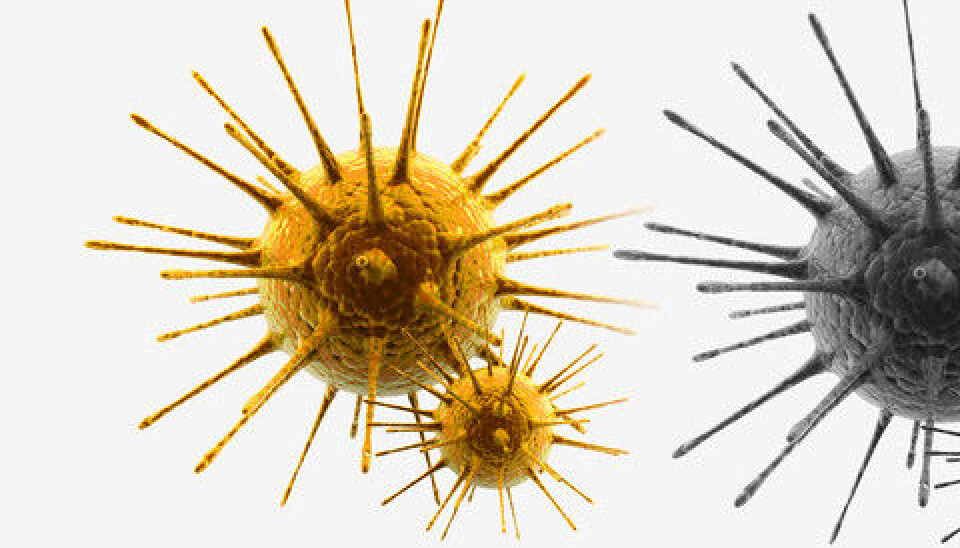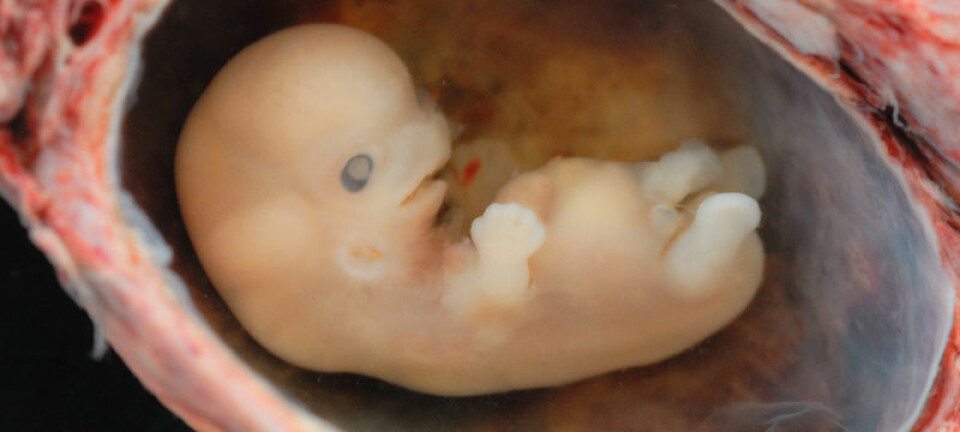
Why tumours become resistant to treatment
Scientists have identified three genes that could lead to a new understanding of why cancer cells become highly resistant to treatment.
Radiotherapy, chemotherapy and antihormone therapy.
Many cancer patients receive several different forms of cancer treatment without any of them helping. It’s as if the tumours are immune to the doctors’ efforts – a resistance that grows stronger the further the disease progresses.
This resistance has long been a mystery. But now an English-Danish research team has made a discovery that unveils where this resistance comes from and what can be done about it.
In an article published in the journal Nature, the researchers reveal a strong link between the resistant cancer and three specific genes.
We have discovered three genes that determine how stable the chromosomes are when they are copied during cell division. If these genes are missing, the chromosomes are not copied properly, which leads to chaos in the cells’ genetic material. This makes the cells highly heterogeneous and thus also very difficult to treat.
”We have discovered three genes that determine how stable the chromosomes are when they are copied during cell division. If these genes are missing, the chromosomes are not copied properly, which leads to chaos in the cells’ genetic material. This makes the cells highly heterogeneous and thus also very difficult to treat,” says Professor Jiri Bartek, a researcher at the Danish Cancer Society.
No two cancer cells are identical
The new discovery is the result of many years of intense research work.
The first breakthrough came in 2012, when the research group discovered how a cancer develops during treatment. It turned out that the cells in such a tumour were highly dissimilar in their genetic structure. None of the parts (groups of cancer cells) taken from the same tumour that they compared were identical.
The study sparked a discussion about what these great internal differences might mean. It soon became clear that more information was needed about how cancer cells in the same tumour can develop in such diverse ways if the researchers were to have any hope of developing an effective treatment against them.
The study showed that the chaotic DNA in the cancer cells was primarily driven by errors that occurred before the copied chromosomes were separated and not during the cell division – contrary to what we had expected.
They took on the challenge and compared the 46 chromosomes that are found in normal human cells with chromosomes from cancer cells.
Lack of genes causes chaotic cell division
The research group studied a phenomenon known as cancer chromosomal instability (CIN), in which the DNA in the cancer cells becomes increasingly confused and chaotic as time passes. Every single cell division leads to more chaos in the DNA, which increases the aggressiveness of the tumour.
In a series of experiments, which included isolating and examining the chromosomes in the cancer cells one by one under a microscope, the researchers found that the chaos occurs as a result of an error in the individual stages of cell division – errors caused by the lack of one or more of three genes.
These three so-called CIN-suppressor genes are known under the names MCD4, MEX3C and ZNF516, but their function or relation to cancer has so far been a mystery.
Genetic material copied incorrectly
To understand exactly what goes wrong when one of these three genes are missing, we need to look at each individual cell’s genetic material in the shape of the 46 chromosomes, each of which forms a long strand of DNA that carries our genes.
1. DNA replication: when a healthy cell divides, it first creates an exact copy of the 46 chromosomes.
2. Chromosome segregation: the next step in the cell division is to split the genetic material into two identical parts that are divided between two new daughter cells.
If the cell lacks one or more of these three genes, this process spirals out of control. The cells end up with a random shape and number of chromosomes, rather than the normal 46.
There is also a risk that the tips of a chromosome end up being welded together, while other sub-components of a given chromosome will be copied many times, or even deleted.
Cell division monitored under a microscope
Bartek and his colleagues were curious to see whether there was a correlation between the point in the division process at which the error occurred and how the cancer cell’s chromosome turned out.
Looking for correlations, they put hundreds of cancer cells that were in the middle of the division process under a microscope.
They found that errors during DNA replication resulted in chromosomes with tips that had been tied together or chopped off, while errors that occurred during the cell division itself resulted in the otherwise correctly copied chromosomes not being properly separated.
”The study showed that the chaotic chromosomal DNA in the cancer cells was primarily driven by errors that occurred before the copied chromosomes were separated and not during the cell division – contrary to what we had expected,” says Bartek.
Cells stress over lacking genes
Cell division is a particularly vulnerable period in a cell’s life. All cells live with the constant challenge of ensuring an accurate transfer of DNA from one generation of cells to the next.
This period presents a particularly great risk of harmful effects that can slow down the copying process and generate errors in the chromosomes.
The study revealed that the cells that lacked one of the three genes copied their DNA extremely slowly, which indicated that they were stressed.
Cancer cells’ strength can be turned into a weakness
When the cancer cells are constantly changing character and identity, it is not easy to design a conventional treatment against them.
But the researchers are hoping that the new discovery can be used to exploit the cancer cells’ own defence against treatment and use it as a weapon against them.
The trick is to make the cancer cells so unstable that they lose their functionality and are destroyed.
So the task consists of finding a way that can make the division process so chaotic and error-prone for the cancer cells that they are destroyed, regardless of how their genetic material might turn out.
In this study, the researchers have focused on colorectal cancer cells, but the same part of chromosome 18, where the three genes are located, is also lost from cells in other types of cancer.
The researchers believe that they have found a mechanism that is universal for most cancers and not just the type that they have studied. This gives us some hope that it will be possible in the long run to find a method that can beat all forms of cancer cells.
----------------------------
Read the Danish version of this article at videnskab.dk
Translated by: Dann Vinther
Scientific links
- ”Replication stress links structural and numerical cancer chromosomal instability”, DOI:10.1038/nature11935
- ”Association between chromosomal instability and prognosis in colorectal cancer: a meta-analysis,” Colorectal cancer, DOI:10.1136









